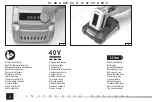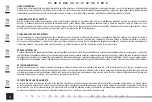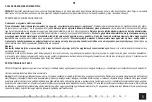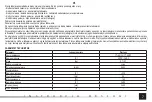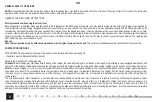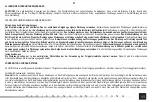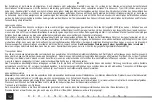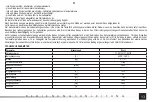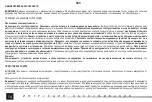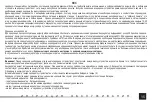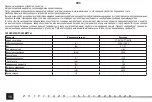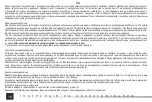
9
Storage of the battery
In order to prolong the life of the battery, it is required to provide adequate storage conditions. The batteries can go through approximately 500 „loading - discharging” cycles.
The battery must be stored between 0 and 30°C, at the relative humidity of 50%. In order to store the battery for a prolonged period, it is required to charge it to approximately
70% of its capacity. In case of prolonged storage, it is required to recharge the battery once a year. Do not permit excessive discharging of the battery, since this would reduce
its life and may cause irreversible damage.
During storage, the battery will be gradually unloading due to leakage conductance. The process of automatic unloading depends on the temperature of storage, since the
higher the temperature, the fastest the process. In case of incorrect storage of batteries, there is a danger of electrolyte leakage. In case of leakage, it is required protect the
leakage with neutralizing agent. In case of contact of electrolyte with the eyes, it is required to rinse the eyes abundantly, and then immediately seek medical assistance.
It is
prohibited to use a tool with a damaged battery.
In case the battery is completely worn out, it is required to deposit it at a special point dedicated to disposal of such waste.
Transport of the batteries
Lithium-ion batteries are in accordance with legal regulations treated as dangerous waste. The user of the tool may transport the tool with the battery or only batteries by land.
Then no additional conditions must be complied with. In transport is realised by third parties (for example dispatch through courier service), then it is required to proceed in
accordance with regulations for transport of dangerous materials. Before shipment, contact an authorised person.
It is prohibited to transport damaged batteries. During transport the battery must be removed from the tool, and the exposed contacts protected, e.g. with insulating tape. Protect
the batteries so that they do not move inside the package during transport. It is also required comply with the national regulations for transport of dangerous materials.
Charging the battery
Attention!
Before charging you should disconnect the charger from the mains by unplugging the power supply from the mains. In addition, you should clean the battery and
its terminals of dirt and dust with a soft, dry cloth.
The battery has a built-in charge indicator. When you press the button, LEDs will light up (I), the more LEDs, the more
the more battery is charged. If the button is pressed and the LEDs are off it means that the battery is discharged.
Disconnect the battery from the tool.
Insert the battery in the charger socket, so that the latches secure the battery into the socket (II).
The charging station has two LEDs, green and red. They show the status of operation:
- the red LED lights up - the battery is charging,
- the green LED lights up - the battery is charged,
- red and green LEDs light up at the same time - the temperature protection is on,
- red and green LEDs are blinking - the battery is damaged,
- green LED is flashing - there is no battery in the charging station.
Plug the charger into a mains socket.
When the red LED lights up, it means the loading process.
When charging is complete, the red LED goes off, and green LED lights up, indicating the charging of charger.
GB
O
P
E
R
A
T
I
N
G
I
N
S
T
R
U
C
T
I
O
N
Summary of Contents for YT-85132
Page 14: ...14 RUS...
Page 15: ...15 Li Ion 10 20 500 0 30 50 70 I II RUS...
Page 17: ...17 UA...


